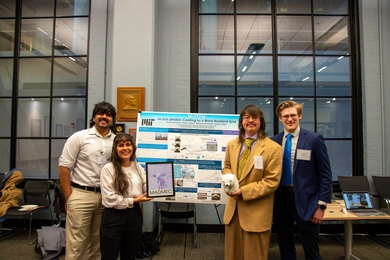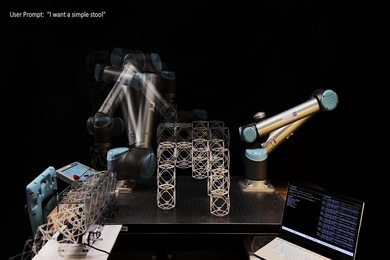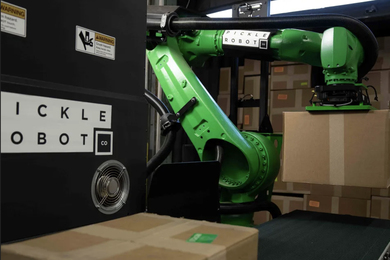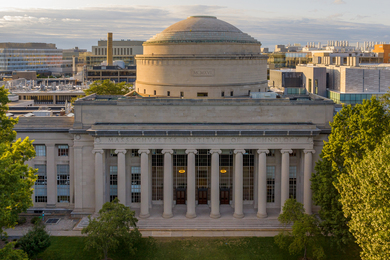NASA astronaut Franklin Chang-Diaz (ScD 1977), who has flown more space shuttle missions than any other MIT alumnus, discussed his work on a new propulsion system at a January 25 talk on campus.
Dr. Chang-Diaz, a veteran of six shuttle missions, was a mission specialist on last June's STS-91 mission which tested the Alpha Magnetic Spectrometer (AMS), an investigation led by Professor Samuel Ting, a Nobel laureate and researcher at MIT's Laboratory for Nuclear Science.
Dr. Chang-Diaz narrated a brief video overview of the flight, which also was the final Shuttle-Mir docking mission. During the mission, the ship's KU band antenna system failed to transmit data necessary for real-time calibration of the AMS experiment. He described the crew's in-flight maintenance procedure, which rerouted the AMS telemetry to the shuttle's S-band antenna system and allowed the AMS detector to be calibrated successfully from the ground.
Dr. Chang-Diaz then presented a summary of his research on plasma rocket engines and the VASIMR (variable specific impulse magnetic resonance) propulsion system. This engine uses plentiful hydrogen fuel and ion cyclotron resonance heating to create ionized plasma, which is controlled using a nozzle based on a magnetic field. The three-stage plasma rocket engine can achieve variable specificimpulse and thrust at maximum power and can be used to achieve continuous acceleration.
This technology could serve as the primary propulsion system for a manned mission to Mars in the next century, perhaps as early as 2018, Dr. Chang-Diaz said. Such a mission could deliver both an unmanned cargo ship and a crew lander to Mars utilizing a fast trajectory made possible by the propulsion technology, reducing the flight time from Earth to Mars to 93 days outbound and 89 days for the return. Chemical rocket systems based on today's technology would require mission times of at least 10 months in each direction.
He also presented a technology roadmap for the VASIMR concept which showed two technology paths, one based on ground testing at NASA's Advanced Space Propulsion Laboratory and the other based on a technology demonstration mission in space utilizing the Radiation Technology Demonstrator (RTD) spacecraft. This spacecraft would test an early version of the ionized plasma rocket engine utilizing helium fuel for flight safety reasons.
Dr. Chang-Diaz received a doctorate in applied plasma physics from MIT in 1977 and became a NASA astronaut in 1981. He has accumulated over 1,269 hours in space; his record of six missions is matched by only two other NASA astronauts, Story Musgrave and John Young.
His first space flight was STS 61-C in 1986 which was a satellite deployment mission. In 1989 he flew a mission which launched the Galileo spacecraft on its mission to Jupiter. He also flew two missions, one in 1992 and the other in 1996, which deployed the Tethered Satellite System. In 1994 he participated in STS-60, which was the first joint US/Russian space shuttle mission.
While maintaining active flight status in the astronaut program, Dr. Chang-Diaz continued his research in rocket propulsion based on magnetically confined high-temperature plasmas. From 1983-93, he was a visiting scientist at the MIT Plasma Fusion Center, where he led plasma propulsion research. In 1993, he became director of the Advanced Space Propulsion Laboratory at the NASA Johnson SpaceCenter, where he continues his research on plasma rockets.
A version of this article appeared in MIT Tech Talk on February 3, 1999.





